What is fascia
and why is its treatment such an important protocol in therapeutic massage?
To perform a myofascial ‘massage’ is actually not to really give a massage at all, but rather a facilitation targeting a rarely heard of connective tissue conveniently named ‘fascia’.
Fascia is a thin but extremely sturdy fibrous tissue that serves as a veil over our bones, organs and muscles. Likewise, it is an uninterrupted, three-dimensional web of tissue that extends from head to toe, from front to back and from interior to exterior: To make a long story short, it is simply everywhere and with this in mind, proper attention needs to be placed on this critical and sometimes very fickle anatomical structure.
We know what fascia is, but what does it do? Simply, our fascial system serves to isolate, protect and connect our muscles, organs, nerves and blood vessels in the body. Without it, we’d have a ‘floating’, vulnerable anatomy that would not be able to withstand the rigor of everyday life. Moving on, for a number of reasons, including disuse, insufficient stretching and injuries, the fascia and the underlying muscle tissue can stick together. This is known as an adhesion, and it results in restricted muscle movement along with pain, postural misalignment and reduced flexibility or range of motion, all of which can span from mild to severe depending on the circumstances.
Myofascial release is then a bodywork technique that has the freeing up of these said adhesions as its prime mandate. The approach uses no oil, as the bodyworker is looking for as much friction as she can afford to really stretch and deconsolidate these troublesome clusters of tissue. Because of its ubiquitous and three-dimensional nature, fascial tightness in the back (ie posterior) of the client often has its roots in restricted fascia in the anterior and its perpetual pulling. Thus, depending on the area of the body being worked on, the front will often be targeted first in order to release the tautness of the overall system.
Myofascial release is a holistic approach that truly takes into account the intricacies and unequivocal interconnectedness of the human body. We call it a facilitation rather than a massage because, as myofascial therapists, we aim to instill longstanding benefits by opening up the body and its structures to their anatomically correct positions, well before bad posture, inactivity and injuries took precedence.

